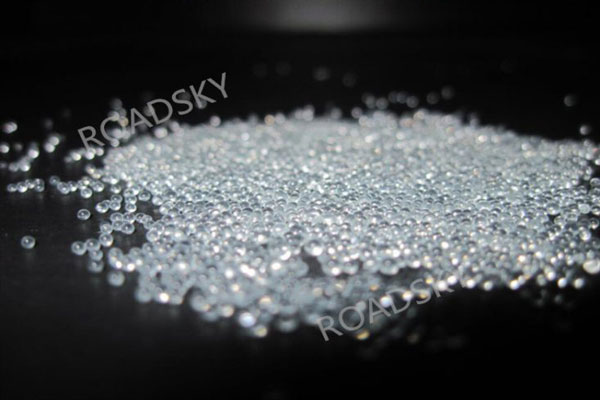Roundness Ratio Requirement of Glass Beads for Road Markings
Reflective road markings play a crucial role in enhancing nighttime visibility and overall road safety. Glass beads are a key component of these markings, and their roundness ratio is a critical factor in determining their effectiveness. The roundness ratio refers to the degree of circularity or sphericity of the glass beads, influencing their retroreflective properties and overall performance on the road.

Roundness Ratio Defined:
The roundness ratio is a geometric parameter that quantifies how closely a particle approximates a perfect sphere. In the context of glass beads for reflective road markings, a higher roundness ratio indicates a more spherical shape.
Importance of Roundness Ratio:
1. Retroreflective Efficiency:
The roundness of glass beads directly affects their ability to retroreflect light. Spherical particles are more effective in redirecting incident light back towards its source, which is essential for the visibility of road markings at night.
2. Durability:
Spherical glass beads with a high roundness ratio are generally more durable. Irregularly shaped beads may wear down more quickly under traffic, reducing their longevity and effectiveness over time.
3. Adhesion to Marking Material:
Glass beads are often embedded in the paint or thermoplastic material used for road markings. Beads with a higher roundness ratio are more likely to bond securely with the marking material, ensuring they remain in place and functional over an extended period.
Industry Standards for Roundness Ratio:
The standards and specifications for glass beads used in reflective road markings vary by region and are often set by transportation authorities or standardization organizations. However, a common guideline is to have glass beads with a roundness ratio of at least 70%. This ensures that the beads maintain their retroreflective properties and overall performance.
Quality Control and Testing:
Manufacturers of glass beads for road markings employ quality control measures to assess and maintain the roundness ratio of their products. Particle size analyzers and microscopy are commonly used tools to measure and evaluate the roundness of individual beads within a given batch.
Choosing the Right Glass Beads:
When selecting glass beads for reflective road markings, it’s essential for road authorities and contractors to consider the specified roundness ratio in accordance with local standards. Additionally, other factors such as gradation, refractive index, and coating may influence the overall performance of the glass beads and should be taken into account.
Conclusion
The roundness ratio of glass beads is a critical parameter in ensuring the effectiveness and longevity of reflective road markings. By adhering to industry standards and considering the retroreflective efficiency, durability, and adhesion properties of glass beads, road authorities can enhance nighttime visibility and promote safer road conditions for motorists.

